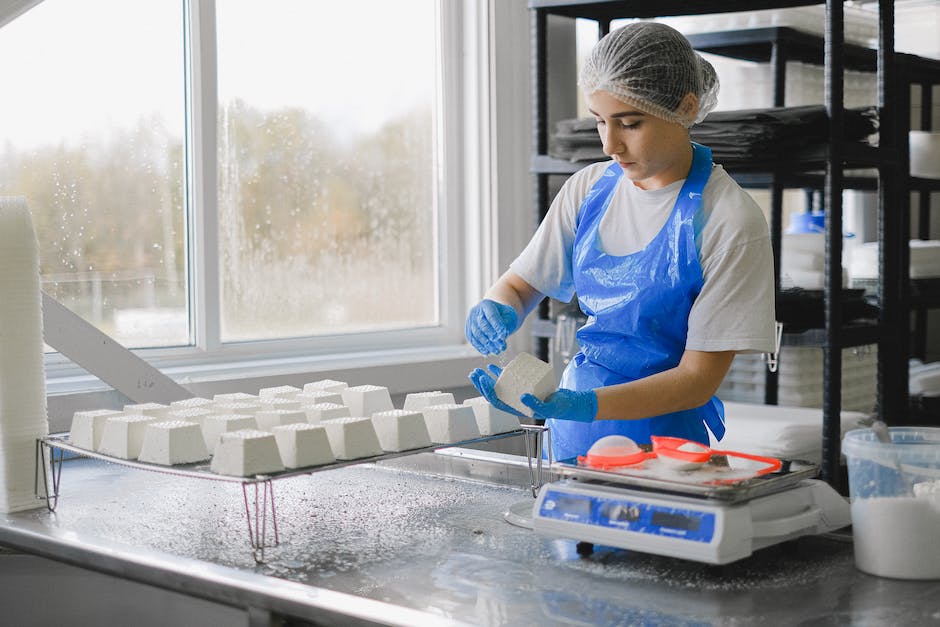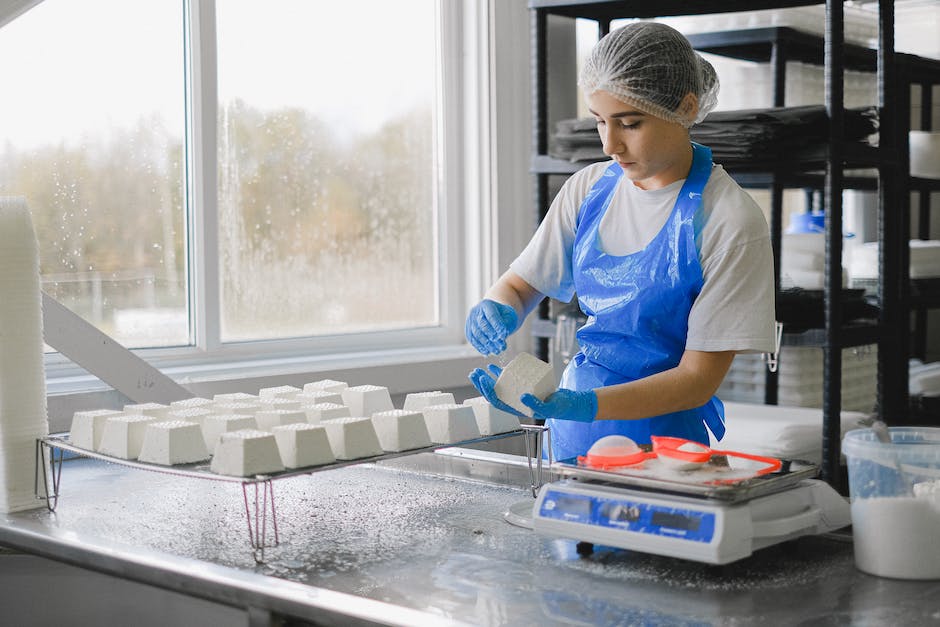

Agridisk
Egypt - Alexandria

Food and beverage industry trends 2023 & What are the new beverage trends in 2024?
Description: In the fast-paced world of the 21st century, changes to consumer behavior, technology, and regulations have propelled drastic shifts in the food and beverage industry. As a critical feature of the global economic landscape and integral part of daily life, understanding the factors shaping this industry is essential. This involves an examination of shifting consumer preferences, technological advancements, sustainability goals, regulatory changes, and the rise of e-commerce. Unpacking these trends provides a window into the industry's future, illuminating opportunities and challenges, as well as strategies for businesses in meeting their consumers' evolving expectations in a responsible and sustainable manner. From farm-to-table dining to delivery apps, the food and beverage industry is pulsating with dynamic change. The rapid metamorphosis is primarily fueled by evolving consumer preferences which are better informed, globally inspired, and more adventurous than ever before. Today's consumers don’t just feed their hunger, they live their values. In the global marketplace for food and beverages, ethical eating ranks high among priorities. Discerning consumers aren't just asking about the quality of ingredients, but also inquiring into the who, what, where, and how of sourcing. Organically grown, fair trade, or sustainably sourced— these are more than buzzwords. They're driving sales and shaping business strategies across the industry. This moral compass extends to packaging trends too, with biodegradable, eco-friendly options considered the new norm. As technology permeates the gastronomic world, the boundaries of the impossible are steadily receding. From grocery shopping to meal prep, consumers now lean more towards digital assets to aid their culinary endeavors. Smart home tech, such as voice-enabled assistants and IoT connected appliances, simplify the cooking process. Meanwhile, delivery apps and subscription meal services have been successful in capitalizing on the time-pressed lifestyle of today's consumers. This trend endorses technology as not only a convenience-enhancer, but also as an industry game-changer. Today’s consumers are becoming extra conscious of what goes into their bodies. Rising instances of diseases related to lifestyle have attributed to the surge in healthy eating. High protein, low carb, sugar-free, gluten-free, and plant-based are among the commonly preferred options that align with health goals. This trend is not just limited to niche market segments anymore. Mainstream brands are now reformulating recipes, revising labels, and innovating healthier alternatives to meet the consumer's desire for pleasurable good health. The modern consumer’s pursuit doesn't stop at satisfying hunger. They crave experiences and narratives that intrigue their senses, with exclusive gastronomic experiences being high on their list. Pop-up dinners, food festivals, brew tours, farm visits – the demand for memorable, share-worthy food experiences is soaring. This trend emphasizes that engaging storytelling and conspicuous culinary theatrics can add substantial value to your food and beverage offering. In closing, it goes without saying that consumer preferences will continue to evolve. The onus is on industry leaders to keep themselves finely tuned to these shifts and make creative adaptions. The goal is clear: to tantalize tastebuds, impress ethical sensibilities, leverage technology, and offer memorable experiences - all while making thoughtful considerations for health. After all, the essence of the food and beverage industry lies in its perpetual freshness and continual reinvention. At this very moment, technology is transforming the food and beverage sector at a pace that is breathtaking, stimulating innovation, and redefining the dining-out experience as we know it. Artificial Intelligence and Robotics, two of the leading catalysts in the tech world, are making prominent strides in the food and beverage scene. Automation and robot-assisted service are no longer the stuff of sci-fi tales, with robotic bartenders and autonomous burger flippers turning into a reality in several high-tech venues across the globe. This trend not only feeds into our fascination with technology, but also addresses labor shortages and enhances operational efficiency. At the forefront of this revolution, pioneering technologies like Blockchain are offering impressive solutions for supply chain management and transparency. From the identification of foodborne illness outbreaks to counterfeit mitigation, Blockchain's ability to offer a tamper-resistant, traceable record base is truly transformative. For businesses, it stands for improved trust, minimized waste, and superior operational efficiency, providing a win-win scenario for both the industry and the ever-discerning consumer. Moving on to another crucial aspect where technology plays a significant role – the digital dining experience. Customers enjoy the power of choice more than ever before, and rest assured, technology is reciprocating. Be it making reservations, ordering food online, or requesting personalized health-centered meal plans, mobile apps and online platforms are turning these into an easy reality. The customer's journey doesn’t end there. More restaurants are integrating payment solutions blended into these platforms, leading to faster and convenient transactions which only adds to the enhanced customer experience. Coming to one of the latest trends breaking ground – 3D food printing. It sounds futuristic, but the concept is not entirely new. This technology enables intricate food designs, customized nutrient quantities, and a radical approach towards reducing food waste. Though still maturing, proponents say it could majorly disrupt the industry, enabling exciting new culinary possibilities and reimagining food production and presentation. Last, the role of Big Data and Analytics tends to be overlooked in the F&B sector. But in reality, it's indispensable as it pulls together customer data insights to help businesses gauge buying patterns, popular menu items, and peak service times. Utilizing this information can lead to data-driven decision making, propelling businesses towards success and growth. In summary, technology and the food and beverage industry are now intrinsically tied, and their synergy is pushing the boundaries of what's possible, both in the kitchen and the dining room. Businesses that successfully leverage these technologies while keeping pace with consumer expectations will undoubtedly stand a step ahead of their competition in today’s fast-evolving marketplace. This is the revolution you don't want to miss out on. Keeping pace with this changing global scenario, the sustainability trend is having a profound impact on food and beverage businesses. Success-driven food entrepreneurs recognize the potential this trend holds, and are rapidly integrating sustainability into their strategic plans, being aware that consumers increasingly express preference for products that are not only healthy, but beneficial to the planet. The wave of sustainability is ushering in packaging innovations that are not only futuristic but environmentally responsible. Traditional plastic packaging is being replaced by biodegradable options, or better yet, eliminated entirely. In beverage industries, we see a surge in refill options - with breweries and wineries introducing refillable bottles, effectively combining consumer convenience with sustainability. Further, the trend towards reducing food waste is influencing multiple aspects of businesses - from menu creation to portion sizing. Restaurants are adopting the concept of ‘root to stem’ dining, where every part of the ingredient is used, minimizing waste and showcasing culinary creativity. Many are partnering with food waste management companies that convert excess food into renewable energy, thereby positively contributing to the environment. There's also a massive shift towards regenerative agriculture - a farming and grazing practice that emphasizes biodiversity and soil health. Food and beverage companies are increasingly sourcing from such farms, ensuring the production process is in harmony with nature, and that their products are superior in quality. A significant change is seen in shifting consumer preferences towards plant-based options. Businesses in the food and beverage sector are responding by creating an array of plant-based products. This not only satisfies the rising consumer demand but reduces the carbon footprint associated with meat and dairy production. The concept of local sourcing is being embraced wholeheartedly. Providing consumers with locally sourced produce and beverages not only ensures freshness and supports local economies but reduces carbon emissions associated with long-distance transportation. Finally, the crossroads of sustainability and technology is home to some truly cutting-edge developments. Vertical farming is one such potential game-changer. By growing crops in vertically stacked layers, it uses significantly less water and land than traditional farming, while preventing pesticide use. Without a doubt, the sustainability trend is revolutionizing the food and beverage sector. As this dynamic unfolds, it is innovation and adaptation that will let brands differentiate themselves, build trust, and maintain relevance in an increasingly eco-conscious market. Poised to significantly transform the food industry landscape, lab-grown food and alternative proteins are growing in popularity. These changes are not only driven by a need for sustainability or animal welfare considerations but also new health-conscious consumers seeking cleaner sources of protein. Expect regulatory changes to pave the way for clear labeling and manufacturing standards to ensure safety and meet the mounting demand. The use and modification of GMOs have been a hot-button issue for years, and consumer sentiment continues to affect industry policy. Prospective changes to labeling requirements and cultivation guidelines will necessitate adaptation from industry leaders for a smooth transition. Regardless of one's stance on the issue, staying ahead of the curve on GMO regulations will be essential for operational agility. Climate change has real implications for the food industry. As weather patterns shift and severe weather events become more frequent, the food supply chain becomes more vulnerable. Industry leaders should anticipate new regulations aimed at improving resilience and reducing the environmental footprint of food production in response to such change. In response to recent food-related outbreaks, updates to the FSMA may be on the horizon. These laws will likely put more pressure on producers and retailers to prevent contamination rather than respond to it. Businesses across the supply chain will need to adapt their processes and analytics for proactive compliance. In response to an increasingly health-conscious consumer base, there's an anticipated greater emphasis on nutritional transparency. Consumers want to know exactly what they're ingesting and regulators are responding. Expect tighter regulations around nutritional labeling and non-standard food claims. Environmental consciousness is a significant trend that’s here to stay. Be prepared for regulations around clear labeling of a product's environmental impact, particularly its carbon footprint. Such transparency will allow consumers to make informed choices based on environmental considerations that are becoming increasingly important to them. In conclusion, foresight is essential in navigating the food and beverage industry, especially in a time of rapid transformation. By staying informed about potential regulatory changes and adaptively innovating, industry leaders can position their businesses to not just survive, but flourish in the decades ahead. With an air of exhilaration, let's delve into the fascinating web of e-commerce and its meteoric rise in revolutionizing the food and beverage industry. Given today's ubiquitousness of technology and the constant pursuit of convenience driving consumer behaviors, the food industry is repositioning itself to adapt and succeed in the ever-evolving digital landscape. One way e-commerce is transforming this industry is through the phenomenon of direct-to-consumer (DTC) sales. As market boundaries blur, many food and beverage manufacturers are bypassing traditional retail channels and reaching out to consumers directly, primarily through digital platforms. These DTC models are empowering food and beverage brands, allowing them to control their narrative, enhance customer relationships, and unlock new revenue streams. In addition, e-commerce is stirring the pot by redefining grocery shopping. With seamless apps and websites designed for easy navigation and payment, online groceries are revolutionizing our food shopping experience, bringing the 'world's supermarket' to our fingertips. The race for owning the customer’s online grocery basket continues to heat up, and those brands that provide a high level of convenience, a large assortment, and rapid delivery will emerge as leaders. Also commanding attention is the transformation of meal delivery services. Gone are the days when pizza was the only food you could get delivered at your doorstep. This collision of tech and takeaway has resulted in a food delivery boom, with platforms like DoorDash, Uber Eats, and GrubHub witnessing explosive growth. It’s not just about convenience anymore; it's also about the variety and the experience, broadening consumer access to a diverse selection of dining options. The food and beverage industry is also witnessing a surge in subscription services, thanks to e-commerce. From meal-kit delivery services like Blue Apron and Hello Fresh to craft beer and specialized coffee subscriptions, the power to discover unique food products and the convenience of automated delivery systems is leading to a renaissance of the consumer food experience. Moreover, e-commerce is playing a substantial role in democratizing access to global flavors. Foods from across the world are making their way into our kitchens, thanks to platforms like Amazon and Alibaba that erase geographical limitations and offer an unprecedented variety of products to consumers regardless of their location. Lastly, transparency, often listed as a major concern for today's consumers, is becoming more manageable, thanks in part to e-commerce providing an avenue for detailed product information. Consumers can learn about a product's ingredients, production methods, nutritional content, and more, quickly sowing the seeds for a relationship built on trust. In conclusion, as e-commerce accelerates its growth in the food and beverage industry, brands that thoughtfully align their business strategy with changing digital trends are set for success. It is imperative to understand that e-commerce is not solely a channel; it's a fundamental shift in how the industry operates. This calls for continuous innovation, quick adaptation, and above all, putting the consumer at the forefront of decision-making. The food and beverage industry in 2023 reflects a tangible response to the global dynamics altering consumption patterns and business models, driven by technological innovation, sustainable practices, evolving regulations, and the proliferation of e-commerce. These trends underscore the importance for industry players to embrace change, innovate persistently, and put in place strategies that prioritize responsibility, sustainability, and above all, customer satisfaction. As we navigate the future, the industry's capacity to adapt and grow amidst these shifts will not only stand as a testament to its resilience but an affirmation of its vital role in society and the global economy. As we chart the course for the future of food, a delicious revolution is on the horizon, tantalizing the taste buds of gourmands and sustainably-minded eaters alike. The year 2024 promises a renaissance of culinary innovation and ecological consciousness, blending tradition and technology to create a gastronomic landscape rich with flavors that are as kind to the palate as they are to the planet. The ingredients leading this delicious charge? They're deeply rooted in regenerative agriculture – an approach to farming that's reviving soils, ecosystems, and rural communities. This pivot towards restorative agriculture isn't just a passing trend, it's a paradigm shift in how we grow, cook, and think about our food. Prepare to embark on a flavorful journey where each bite is steeped in history and commitment to a better world, reshaping the culinary scene with a sense of purpose that extends far beyond the kitchen. The way we eat is the canvas for what could be the most substantial art piece of our times: the dish that not only tantalizes our taste buds but gives back to the planet. Welcome to the burgeoning world of regenerative agriculture, where every forkful represents a step towards healing our ecosystems. It’s not just about eating sustainably; it’s about partaking in a cycle that nourishes the land, the farmers, and, ultimately, the culinary creations that grace our tables. Picture this: crops that grow in soil so rich and alive, it seems to play its own symphony. Regenerative agriculture focuses on soil health, inviting a diverse population of microbes and nutrients to dance in harmony. This is where flavor starts—deep in the earth, where roots mingle with fungi and bacteria to create wholesome, naturally enriched ingredients. The result? Produce that’s robust in flavor, meats with a depth of taste that only wholesome feed can provide, and an invisible season present in every mouthful. Rediscover fruits and vegetables that your grandparents knew—an array of colors and tastes nearly forgotten. Regenerative farms often grow heirloom varieties, preserving biodiversity and bringing back flavors that have been sidelined by commercial agriculture. Think purple carrots with a peppery kick, tomatoes that burst with the perfect balance of sweet and tart, and apples with complex notes that supermarket varieties can’t begin to touch. These are flavors with history, and they’re ready to take over your palate. Meat lovers, rejoice! Regenerative practices extend to livestock. Animals are raised in pastures, embracing their natural behaviors, contributing to the land’s nutrient cycle, and leading better lives overall. This thoughtful husbandry translates into meat that is not only ethically appealing but also boasts a flavor profile that is truly incomparable. The marbling in a steak that’s enjoyed fresh air and green grass, the succulent juiciness of a chicken that’s pecked at its own pace. These are sensory experiences that tell a tale of respect and quality. With regenerative agriculture, the idea of ‘seasonal eating’ is not just trendy; it’s essential. Foods grown and harvested in their appropriate seasons are at peak flavor and nutrition. The joy of awaiting the first strawberries of spring or the hearty squashes of autumn becomes not only a celebration of taste but a commitment to the natural order of growth and renewal. Eating seasonally becomes an adventure, a way to savor the year’s ebb and flow, and a practice that supports regenerative cycles. When you cook with ingredients that stem from regenerative practices, it's not just about following a recipe; it’s about being part of a story that starts with the hands that till the soil. This food doesn’t just arrive; it becomes part of the kitchen energy, its potential unfolds as flavors develop in the pan, and the final dish is a meal steeped in integrity. Every bite is a testament to the resilience of our planet, an investment in agriculture that aims to give more than it takes. So, next time you dine, whether at home or at a restaurant waving the flag of regenerative agriculture, know that you're not just eating to satisfy hunger. You're nourishing far more than just yourself; you're supporting a movement—one that promises a more flavorful future for our plates and our planet. Here's to enjoyment that's genuinely rooted in growth and goodness. Bon appétit, and let the regeneration begin on your tongue! There’s something beautifully primal about the art of fermentation, a culinary craft that dances on the palate and waltzes with our gut health. Adventurous taste-seekers, buckle up! It's time to unearth the symphony of tangy treasures that await in the realm of fermentation, where foods are not just preserved; they’re transformed. Each of these fermented gems brings a chorus of health benefits and an orchestra of flavors to the table. So why not let curiosity lead the way into this piquant paradise? Remember, it’s not just about preserving; it’s about savoring every tangy, transcendent taste that makes every shared meal a memory to cherish. Embarking on a culinary exploration in 2024 is more than a quest for new tastes – it's an adventure in sustainable living and cultural reconnecting. With each forkful of regenerative agriculture's bounty and every sip of naturally fermented nectar, we participate in a global movement towards food sovereignty and environmental healing. It is clear that the next big food trend isn't just about what's on the plate; it's about the legacy we leave for the soil and the soul. So, as you cleanse your palate, ready for the year's food trends, remember that with every meal made from these groundbreaking practices, we're feasting on the very essence of life's interconnected tapestry, savoring flavors with the power to change the world, one plate at a time.Food and beverage industry trends 2023
Shift in Consumer Preferences
"Shaping the Culinary Future: Transformative Consumer Trends Impacting the Food and Beverage Industry"
1. Ethical Consumption: A Recipe for Change
2. The Advent of Culinary Tech: Smarter, Faster, Better
3. Health & Wellness: For the Love of "Good-for-you" Grub
4. Craving for Experiences: Feed the Senses, Not just the Stomach

Technological Innovations in the Food Service
The Title: A New Age Of Foodservice: The Technology Revolution

Sustainability and the Green Movement

Regulatory Changes and Compliance
Emphasizing Lab-Grown Food and Alternative Proteins
Navigating through Genetically Modified Organism (GMO) Labeling Standards
Climate Change Vulnerabilities and Regulations
Food Safety Modernization Act (FSMA) Updates
Nutritional Information Transparency
Carbon Footprint Labeling

The Rise of eCommerce and Delivery Services

What are the new beverage trends in 2024?
The Rise of Regenerative Agriculture Ingredients
The Soil’s Symphony
The Heirloom Revival
Pastured Meats with Purpose
Hyper-Seasonal Eats
From Farm to Kitchen with Love

Fermentation Frenzy: Next-Level Funk and Flavor
